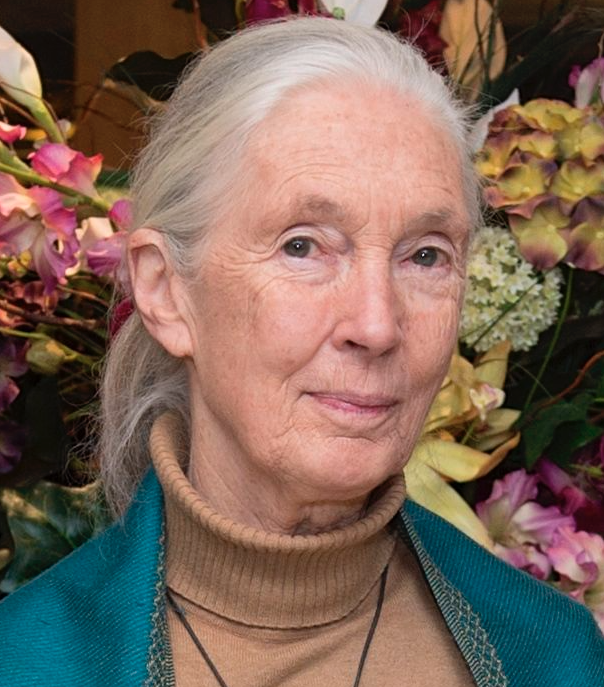Heroes of Environment: Jane Goodall
by Scott Dutfield · 06/01/2020

The woman who went to live with chimpanzees
From a very young age, Jane Goodall showed a natural fascination for animals and their behaviour. When she was just five years old she went missing for several hours, much to the worry of her parents, after following a hen into her coop to find out where eggs came from. Instead of being told off by her parents, Jane’s curiosity was encouraged, and after reading The Story of Doctor Dolittle and the Tarzan novels it soon became her ambition to study animals in the wilds of Africa.
She eventually made it to the African continent when she was 23, and after meeting anthropologist and palaeontologist Dr Louis Leakey, she landed her dream job. Leakey wanted someone “with a mind uncluttered and unbiased by theory” to study chimpanzees in their natural habitat, and because Jane had no formal science qualifications he decided she would be the perfect person for the task. He sent her to Gombe in Tanzania to live among the chimps. Armed with just a notepad and a pair of binoculars, she began watching them from afar. “I wanted to learn things that no one else knew, uncover secrets through patient observation,” said Jane. “I wanted to come as close to talking to animals as I could.”
In just a year she had managed to get the chimps to accept her and allow her to get close enough to make some groundbreaking observations. Jane was the first person to witness chimps making and using tools and hunting and eating other animals – it was previously thought that they were vegetarian. She also noted that they have emotions and personalities much like us, as she watched them hug and kiss as well as fight and kill.
However, many in the wider, male-dominated scientific community were unwilling to accept the discoveries of an uneducated woman. Some even believed Jane had taught the chimps to use tools – “That would have been fabulous if I could have done that,” laughed Jane – and criticised her for giving them names and personalities. “I didn’t give them personalities, I merely described their personalities,” she said.
Although she had no ambition to be a scientist, Dr Leakey insisted Jane studied for a PhD in ethology to give her research more credibility. She obliged, but only so she could go back to Gombe. There, she set up a research centre and spent the next 25 years making further important discoveries about our closest living relatives. Sadly, during that time she also observed the destruction of their habitat and subsequent decline in their population. Today she travels the world campaigning for wildlife conservation and educating the next generation of chimp champions.
Discovering humans are not the only tool makers
While Jane was observing the chimps in Gombe she noticed one of the males, who she had named David Greybeard, stripping leaves from a stick. He then pushed the stick into the hole of a termite mound and began using it to extract the termites and eat them. What Jane had witnessed was the first evidence that humans were not the only species on Earth to make and use tools. It was a truly groundbreaking discovery, and when she told Dr Louis Leakey what she had seen, he responded, “We must now redefine tool, redefine man, or accept chimpanzees as human!”
5 things to know about… Jane Goodall
Jane’s father bought her a soft-toy chimp called Jubilee, a replica of a real chimp who was born in 1935 at London Zoo, England, for her first birthday.
When Dr Leakey first sent her to Gombe, Jane wanted to go alone. However, local authorities wouldn’t let her travel without an escort so her mother travelled with her.
Jane met her first husband, Baron Hugo van Lawick, when he was sent to Gombe by National Geographic to photograph her and the chimps. They married in 1964.
Jane and Hugo had one son together, also called Hugo, in 1967, but to family and friends he was known as ‘Grub’. Jane took inspiration from chimp mothers when raising him.
Jane has visited at least 60 countries, and for over 20 years a toy monkey called Mr H has travelled with her wherever she goes.
This article was originally published in How It Works issue 116, written by Jo Stass
For more science and technology articles, pick up the latest copy of How It Works from all good retailers or from our website now. If you have a tablet or smartphone, you can also download the digital version onto your iOS or Android device. To make sure you never miss an issue of How It Works magazine, subscribe today!





